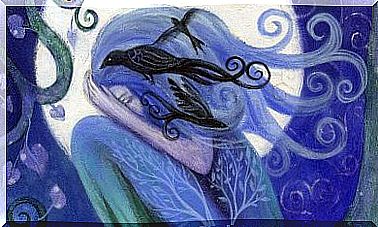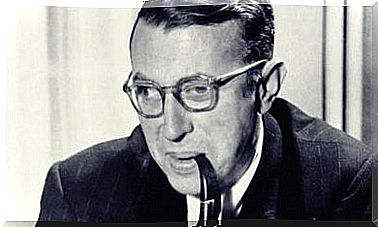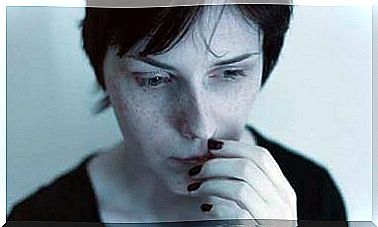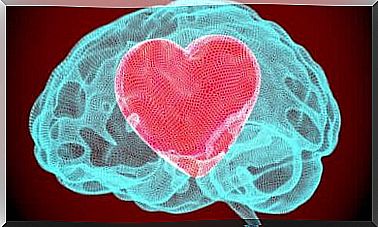Conversion Disorder And “belle Indifference”
Sometimes the brain can provoke incredible reactions on a psychological level, almost straight out of a science fiction movie. Conversion disorder, or as it was renamed in DSM-5, functional neurological symptoms disorder, is an example of this.
Conversion disorder is a perfect example of how body and mind are tightly connected. It is a functional disorder, but it manifests itself on a physical level, as if it were an organic disease, although there is nothing to justify it.
Those known today as somatic symptom disorders come from a set of disorders derived from the concept of hysterical neurosis. It was Briquet, in the nineteenth century, who first placed some order in the classification of hysteria, limiting himself to an empirical classification of symptoms.
Currently, we know conversion as a symptomatology in which bodily functions, either completely or by areas thereof, cease to function or are seriously impeded. This happens without the existence of somatic damage and is not part of a fictitious disorder.
It is important not to confuse somatoform disorders, such as conversion, with psychosomatic illnesses. In the latter, we find a known pathophysiological basis or process, in which psychological factors are related to the onset or course of the disorder.
Clinical Characteristics of Conversion Disorder
As we have said, conversion disorder is basically characterized by the loss of some bodily function. In this sense, we can find patients who are suddenly blind in one eye, aphonic, with paralysis of a limb or even with severe headaches.
These pains were named “clavus hystericus”. After a medical examination, absolutely nothing can be found to explain the condition. So, what is happening?
As with its classifying companion, somatization disorder, conversion often occurs in histrionic personalities. A histrionic personality is one with a marked tendency toward suggestibility, superficiality, emotional lability, dependence, and self-centeredness. However, this personality type remains much more defined in somatization disorder.
What is very characteristic of conversion disorder is the so-called belle indifference . It is the little concern that the patient feels about the symptoms he is experiencing.
Imagine that one day you wake up with a paralyzed arm. Chances are you’ll worry a lot, examine yourself, visit the doctor, and be a little worried about what might be happening.
This is normal. However, this does not occur in patients with conversion disorder, who are not disturbed by their apparent problem. Something similar to what happens in Anton syndrome, where the patient is blind but claims to see perfectly. We still don’t know for sure why this belle indifference occurs , but the truth is that it is quite impressive.
Symptoms vary significantly, so they constitute a very heterogeneous picture. The most common are blindness, deafness, paralysis, aphonia and total or partial loss of sensation, without any support in medical evidence.
The onset of the disorder is common in adolescence and early adulthood (10 to 35 years). It can also occur in childhood and, specifically in people under 10 years of age, symptoms are limited to gait changes and seizures.
It is more frequent in females. Patients with low socioeconomic status, less psychological sophistication or less education, as well as women under 40 who come from rural areas, have a worse prognosis. Depression is a disorder that has a large comorbidity, although it is usually masked.
Remission usually occurs spontaneously within a few days, with or without treatment, although, of course, treatment speeds up the process. If the person faces a stressor again, the most normal thing is for the symptoms to reappear. Therefore, it can be a chronic disorder.
Explanation of conversion and treatment
The DSM explains that the conversion disorder symptom itself revolves around two mechanisms: the primary gain, that is, keeping a conflict or an internal need out of awareness, and the secondary gain, avoiding a harmful activity or gaining support. that otherwise could not.
It seems that, in most cases, excessive stress is the trigger that triggers the disorder. Sometimes illnesses are closely related to the problem they were exposed to. For example, there are patients who feel pain in a part of their body that they have seen injured in another person in an accident.
In relation to the secondary gain, it can be said that, as it happens in many other disorders, the patient, although unconsciously, can get a reinforcement with his problem. The attention, care or abandonment of activities such as work, for some people, can be a gain that perpetuates the problem. This is because, in other circumstances, this attention would not have been received. So it’s just one more way to demand affection.
As for the treatment, although the problem usually disappears spontaneously, it is never too much to accelerate the process with psychological therapy. In this way, an attempt is made to resolve the stressful cause that originated the issue.
Good prognostic indicators are: identifiable stressor, good premorbid functioning, sudden onset, absence of other mental or physical disorders, absence of legal proceedings and short duration of symptoms.
Of cognitive-behavioral therapy, we use the training to reduce anxiety and cope with stress, aided by techniques such as hypnosis or relaxation. Psychodynamic therapy also provides improvements in this regard and aims to resolve underlying intrapsychic conflicts.









